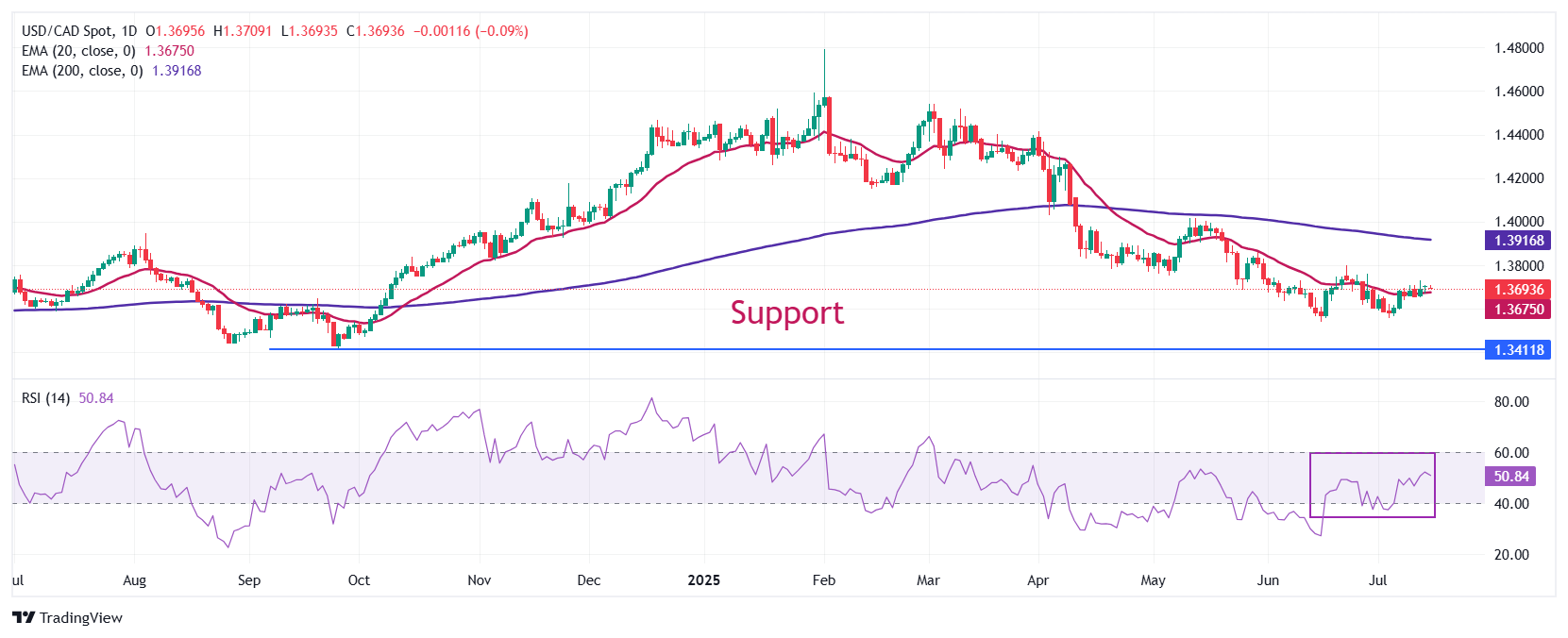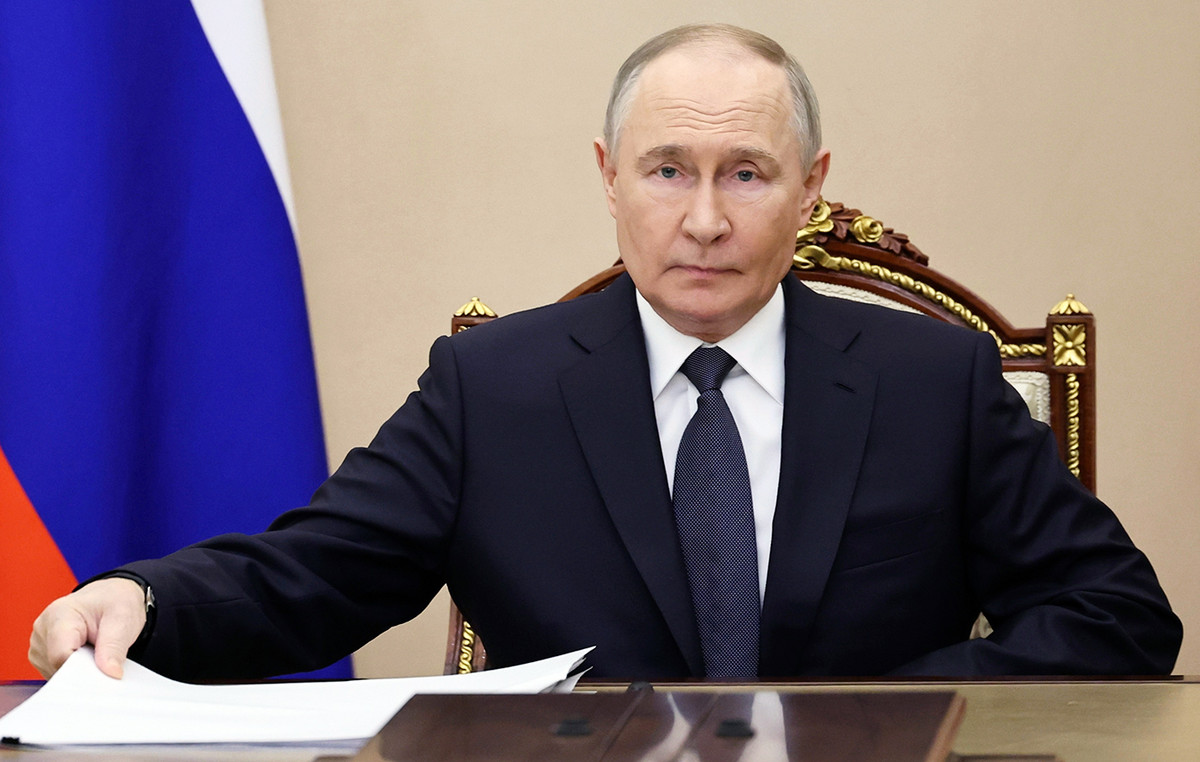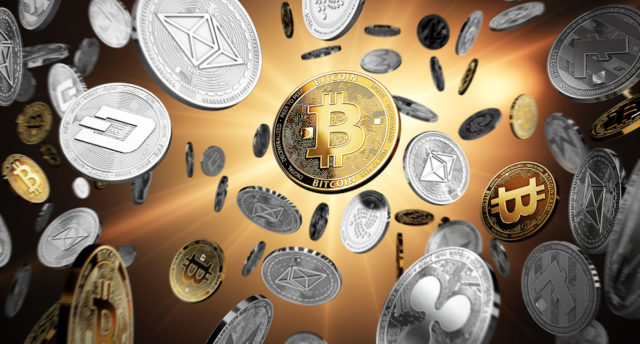- The USD/CAD is stabilized around 1,3700 while investors expect the US CPI data and Canada for June.
- Inflation is expected in both the US and in Canada to have grown at a faster rate in annual terms.
- The 200 -day EMA with descending slope suggests that the general trend is bassist.
The USD/CAD pair quite stable about 1,3700 during the Asian trading session on Tuesday. It is expected that the LOONIE PAR is almost flat while investors expect the publication of the June Consumer Price Index (IPC) from both the United States (USA) and Canada, which will be published at 12:30 GMT.
At the time of writing, the US dollar index (DXY), which tracks the value of the dollar against six main currencies, quietly quotes near the maximum of three weeks around 98.00.
Investors expect inflation in the US to have grown at a faster rate, with the general CPI and the underlying IPC seen accelerating to 2.7% and 3.0%, respectively.Theoretically, a high inflation environment often leads to the maintenance of a restrictive monetary policy position by the Federal Reserve (FED). However, US President Donald Trump has been arguing in favor of reducing interest rates significantly.
“We should be at 1%. We should be below 1%,” Trump said Monday, Fox Business reported.
Meanwhile, it is estimated that the Canadian CPI has grown by 1.9% in annual terms, faster than 1.7% in May. In monthly terms, price pressures are expected to have moderate 0.1% moderately, compared to a 0.6% growth seen in May.
The USD/CAD continues to operate in a range between 1,3638 and 1,3710 during the last week. The torque ranges around the 20 -day exponential (EMA) mobile average, which quotes about 1,3675, suggesting that the short -term trend is lateral. However, the broader trend remains bassist since the 200 -day EMA has a descending slope towards about 1,3917.
The 14 -day relative force (RSI) index remains around 50.00, indicating that the torque lacks impulse in any direction.
Facing the future, an upward movement above the maximum of May 29, 1,3820 would open the door to the maximum of May 21, 1,3920, followed by the maximum of May 15, 1.4000.
On the contrary, the asset could slide towards the psychological level of 1,3500 and the minimum of September 25, 1,3420 if it breaks below the minimum of June 16, 1,3540.
USD/CAD DAILY GRAPH

It lacks
Inflation – Frequently Questions
Inflation measures the rise in prices of a representative basket of goods and services. General inflation is often expressed as an intermennsual and interannual percentage variation. The underlying inflation excludes more volatile elements, such as food and fuel, which can fluctuate due to geopolitical and seasonal factors. The underlying inflation is the figure on which economists focus and is the objective level of central banks, which have the mandate of maintaining inflation at a manageable level, usually around 2%.
The consumer price index (CPI) measures the variation in the prices of a basket of goods and services over a period of time. It is usually expressed as an intermennsual and interannual variation. The underlying IPC is the objective of the central banks, since it excludes the volatility of food and fuels. When the underlying IPC exceeds 2%, interest rates usually rise, and vice versa when it falls below 2%. Since higher interest rates are positive for a currency, higher inflation usually translates into a stronger currency. The opposite occurs when inflation falls.
Although it may seem contrary to intuition, high inflation in a country highlights the value of its currency and vice versa in the case of lower inflation. This is because the Central Bank will normally raise interest rates to combat the greatest inflation, which attracts more world capital tickets of investors looking for a lucrative place to park their money.
Formerly, gold was the asset that investors resorted to high inflation because it preserved their value, and although investors often continue to buy gold due to their refuge properties in times of extreme agitation in the markets, this is not the case most of the time. This is because when inflation is high, central banks upload interest rates to combat it. Higher interest rates are negative for gold because they increase the opportunity cost to keep gold in front of an asset that earns interest or place money in a cash deposit account. On the contrary, lower inflation tends to be positive for gold, since it reduces interest rates, making bright metal a more viable investment alternative.
Source: Fx Street
I am Joshua Winder, a senior-level journalist and editor at World Stock Market. I specialize in covering news related to the stock market and economic trends. With more than 8 years of experience in this field, I have become an expert in financial reporting.







